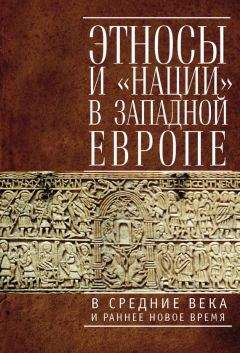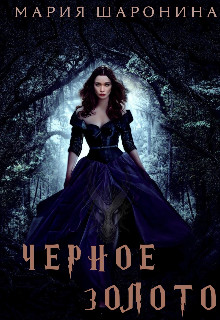Коллектив авторов - Этносы и «нации» в Западной Европе в Средние века и раннее Новое время

Помощь проекту
Этносы и «нации» в Западной Европе в Средние века и раннее Новое время читать книгу онлайн
Со своей стороны власть продемонстрировала в вопросе соотношения этнического и религиозного гораздо большую инертность – она продолжала видеть в обычаях конфессиональную жизнь, искала за бытовыми привычками морисков, т. е. новых христиан, выкрестов из мусульман, криптомусульманство и в конечном итоге пришла к отрицанию такого этнического компонента общества как мориски – потомки андалусцев, в чьих жилах текла кровь арабов, сирийцев, йеменцев, берберов, испано-римлян и вестготов.
Примечания1 Шукуров Р.М. Земли и племена: византийская классификация тюрок // Византийский временник. Т. 69. 2010. С. 132–163.
2 КоноваловаИ.Г. «Система координат» средневековой мусульманской географии. // Джаксон Т.Н., Коновалова И.Г., Подосинов А.В. Imagines mundi. Античность и средневековье. М., 2013. С. 138.
3 Об этом подробно пишет: Резван Е.А. Адам и бану Адам в Коране (к истории понятий «первочеловек» и «человечество»)//Ислам: религия, общество, государство. С. 59–68.
4 Коновалова И.Г. Указ. соч. С. 140.
5 Lema Pueyo J. A. Collection diplomatica de Alfonso I de Aragon y Pamplona (1104–1134). San Sebastian, 1990. P. 141–144.
6 Arie R. Espana musulmana (siglos VIII–XV) // Historia de Espana / Dir. Tu-non de Lara M. Labor. Barcelona. 1984. P. 186.
7 Подробнее об этом сюжете: Рыбина М.В. Кордовские мученики в свете социальной истории // Электронный научно-образовательный журнал История. 2011. № 8. С. 4–5.
8 Следует заметить, что положение иудеев в рамках исламского государства со временем на протяжении средневековья менялось – и на Востоке, и в Испании. В связи с этим в целом использовать материал по истории иудейского населения под властью то мусульман, то христиан – в том разрезе, который интересует нас в этой работе – не очень корректно. Иудеи никогда не были политически-доминирующей группой на Пиренейском полуострове в отличие от представителей двух других упомянутых конфессий. Данные по интегрированию иудейских общин в общество и государственные образования будут по этой причине привлекаться ограниченно, исключительно с целью дать читателю более объемную картину, но без подробностей.
9 Подробнее об этом см.: Варьяш И.И. Правовое пространство ислама в средневековой Испании. М. УРСС, 2001.
10 Подробнее см: Ferrer i Mallol M.T. Les aljames sarrai'nes de la gobernacio d’Oriola en el segle XIV. Barcelona, 1988.
11 См. подробнее: Варьяш И.И. Правовое пространство ислама… Раздел «Ограничительные законы: “ради Бога и нашего интереса"». С. 111–121.
12 О так называемых ограничительных законах см.: Ferrer i Mallol M.T. Els sarrains de la corona catalano-aragonesa en el siglo XIV. Segregacio: discriminacio. Barselona, 1987.
Варьяш И.И.
Resumes
ETHNOS AND NATIONS: CONTINUITY OF PHENOMENA AND PROBLEM OF «ACTUAL MIDDLE AGES»
The collective monograph represents the results of the conference dedicated to key issues of ethno-national identification and self-identification in Medieval and Early Modern Europe. The conference was organized by academic group «Power and society» (Department of History, Moscow State University) in 2012. Created in 1990s, this group intended to consolidate the efforts of Russian specialists in medieval and early modern political history.
The academic significance of the collective monograph is determined by idea that the Middle Ages not only form a prehistory of modern states but also explicate instability of ethno-national «architecture» in modern world (including present Western Europe), and by the fact that previously these problems were almost discussed by Russian sociologists, ethnologists and political scientists but not by medievalists.
The papers presented in the collective monograph demonstrate the very continuity of ethnos and nation underlining the fact of non-accidental emergence of national entities in Modern Europe and summarizing deep and complex inner transformation of the Medieval polymorphic ethnic society into more mature and consolidated community, with long-time and almost imperceptible qualitative transition in their development.
The special attention is paid to the analysis of the terms revealed the wide diversity of markers used in the process of their elaboration. The theme of ethno-national self-identification is represented by the analysis of historical, political and legal thought; forming of «national» language; poetry.
Some articles deal with the problem «self-alien». The authors made an attempt to retrace the ways of overcoming the hostility towards «alien» and patterns of coexistence of different confessional and ethnic groups.
The results of collective research give the opportunity to note the exclusive significance of medieval experience in ethno-national development, which reveals deep processes of consolidation of societies, clarifying epistemology of the problem and making easier search of way out in difficult situations today.
I. ETHNO-NATIONAL PROCESSES: FACTORS, RESULTS AND COVERING TERMS
I.I. ETHNOS AND PROTONATIONS WITHIN THE CONTEXT OF SOCIOECONOMIC AND POLITICAL EVOLUTION OF MEDIEVAL SOCIETY IN WESTERN EUROPE
The fact of the continuity in the development of medieval polymorphic ethnic societies and more mature «national» forms in Modern time impelled the author to analyze the social conditions, prepared impressive transformations of the given phenomena. The whole complex of social, economic and political transformations in the epoch of modernization of medieval society (noticeable from XIII century) was defined as «consolidation» in order to underline the scale and depth of this process.
Consolidation played the role of the determinant mean to overcome particularism as the characteristic feature of medieval society and signed the general trend towards «national» unity. The author argues that the most significant factors of this process are the following: potential of small production realized by the owner of the instruments of labor; division of social labor which multiplied social relations and enlarged the sphere of their activities (overcoming the limits of patrimonial estate, town, province); overcoming the personal aspect in social relations and in the interconnections between power and society; leveling (within the frames of the state) the social status of peasants and townspeople; growth of their social activity (self-organization of corporations and estates); social dynamics; estates representation as a prehistory of civil society; formation of the institute of citizenship as representation of gradual overcoming of polycentricism.
Noted organizational and often initiative role of supreme power and state institutions in the emergence of ethno-national and – further – «national» states, the author underlines the importance of society as the source of strength or weakness of political factor.
I.II. MEDIEVAL STUDIES AND NATIONAL QUESTION (ON INDEFINITE DEFINITIONS)
The key problem of modern scholarly discussion on the «national question» is that of proportion between the subjective and the objective. With respect to history there is a great variety of opinions: somebody consider ethnicity as an everlasting parameter, or speaks about nations referring even to the X–XI centuries; others call these communities «imaginary» and affirm that the national membership is the matter of free choice.
To resolve this problem in the end we need to decide what is for us the meaning of the concepts of «nation», «ethnic identity», «people» and similar. But still above understanding of the meaning of words is the more important question: in which way ethnic understanding of oneself and of others (identification and self-identification) influenced the human behavior, how much ethnic membership determined the human history?
Historically the people always in one or another way conceived their belonging to land and to their kin, and these bounds to some extent were entangled with the others: faith, citizenship (or political rights), estate or professional membership. With the development of social institutions corresponding identities entered into competition with biological ones, and cultural resources (language, history, education) became increasingly more ponderable from the point of view of ethnical identification.
In medieval Europe the concepts of «nation» and «people» had very large spectrum of meaning, sometimes not ethnic at all. From the point of view of collective identity the faith was more important.
The idea of nation («people») as the chief collective subject of the history was shaped only towards the end of Middle Ages, when the feeling of confessional community somewhat weakened and in general the static predefinition was being washed out by the dynamic model of development. Today the idea of the unity of human culture is «politically correct», but politico-biological views on the substance of nations fully maintain their significance on the level of ideologies and mass consciousness.
I.III. SOME NOTES ON THE BYZANTINE MODEL OF «ETHNIC» IDENTITY
In the Byzantine classification of neighbouring nations, of crucial importance was the basic logic of the Byzantine method of systematization and classification of objects, which was based upon elementary Aristotelian logic. The key concept of the Byzantine taxonomy derives from two related pairs of categories: 'Common / Special’ and 'Genus / Species’. The generic categories represent universal models and ideal types encompassing those individualities which exist in reality and which possess a certain sameness. However, the Byzantine taxonomic grid of similarities and differences, on the basis of which new information was incorporated into already existing models, differed significantly from the contemporary one. Unlike today’s ethnic classifications the Byzantines hardly used linguistic criteria. The Byzantine knowledge categorized nations by their locative features. Byzantine classification of the northeastern and eastern nations was primarily bipartite. The main generic categories designating Altai nomadic peoples were Eo0ai, Otivvoi and ToüpKoi. The most common was the name EKti0ai which could have been applied to the nomadic peoples who originated from the regions north and east of the Danube, the Northern Black Sea and Caspian Sea. A great variety of species (such as MaouayeTai, Eaupoparai, Taupooro0ai, nar^ivaKoi, Kotipavoi, MouyotiAroi, etc.) was subordinate to the generic notions of EKti0ai, Otivvoi and ToüpKoi. The name Перош designates people living east of the Byzantine border in the lands of Ancient Persia. In the eleventh through the fourteenth century, the category nepoai, whilst in principle becoming subordinate to the generic concept of Scythians / Huns / Turks, nonetheless had its own sub-species and was an exception rather than the rule.
I.IV. ETHNOLINGUISTIC CRITERIA USED TO DESCRIBE IRAN IN THE CRONICLE OF JOHN MALALAS
The present work deals with criteria used by John Malalas to describe Iran and investigates interrelation between the toponyms «Persis» and «Persian land» and the ethnonyms «Persians», «Parthians», «Medes», «Scyth-ians».
In the mechanism applied for the ethnic classification, primary importance is attached to genealogical, cultural, and geographic features. The logical basis of the Malala’s classification is represented by such categories as species and genus. The concept «Persian» risults to be a genus definition labeling the inhabitants of the Persian empire and all the subject of the Persian king.
II. FORMS OF ETHNO-NATIONAL IDENTITY: HISTORICAL REFLECTION, LEGAL THOUGHT AND CULTURAL PHENOMENA
II.I. «JUSTICE WAS BORN TOGETHER WITH FRANCE»: INSTITUTING OF PATRIOTISM
The article is devoted to the study of the role of Justice in the process of national identification in the period of the emergence of the Etat-nation in the Late Medieval France. The French national identity was constructed as a «political» type of nation with the King of France as the supreme judge at the center. The Royal function ofthe Justice represented by the Parliament of Paris obtained the central place in the propaganda of French national exclusivity. Paris was compared with Ancient Rome as a common native land for the Royal principal residence, also the Supreme Court of Parliament and the University were situated there. The image of the French impartial Justice is embodied by the Sarrasins (Muslims) who appealed with their suits to the Parliament of Paris. Therefore, the Royal Supreme Court (the Parliament) contributed to French national pride and the establishment of patriotism in Medieval France.
II.II. THE BURGUNDIAN SOCIETY AND SELF-IDENTIFICATION OF THE BURGUNDIANS IN THE XVth CENTURY
The Burgundian state under the Valois dukes was composed of different regions which had been parts of others states before or even had constituted independent duchies, counties etc. The needs for legitimation of the dukes' power over those territories and for centralization of their state caused the attempts to represent the dukes of Burgundy as legal and natural successors of the previous dynasties. The official propaganda insisted on peaceful unification of all regions into the Burgundian state and on legal succession. Along with historical arguments this concept seems to have contributed to the formation of Burgundian identity. The representation of the French kingdom and in particular the French king as natural enemies of the Burgundians was another way to consolidate all subjects around the Burgundian dynasty. The duke of Burgundy was represented as the only protector of «la chose publique» and the subjects were requested to help him by paying taxes in return for their welfare. The disaster at Nancy in 1477 demonstrated that the urban community and small nobility rather than aristocracy («Noblesse debilite» according to Jean Molinet) was the support of the heiress of Charles the Bold. Nonetheless, this Burgundian identity in the XVth century does not appear to be national, but dynastic.


![Rick Page - Make Winning a Habit [с таблицами]](/uploads/posts/books/no-image.jpg)






















